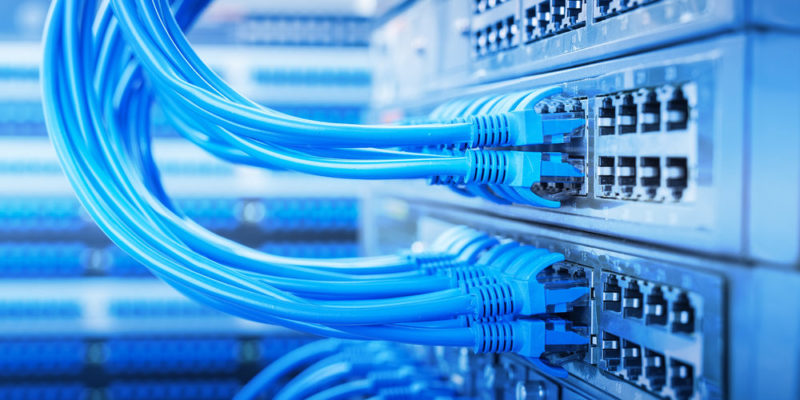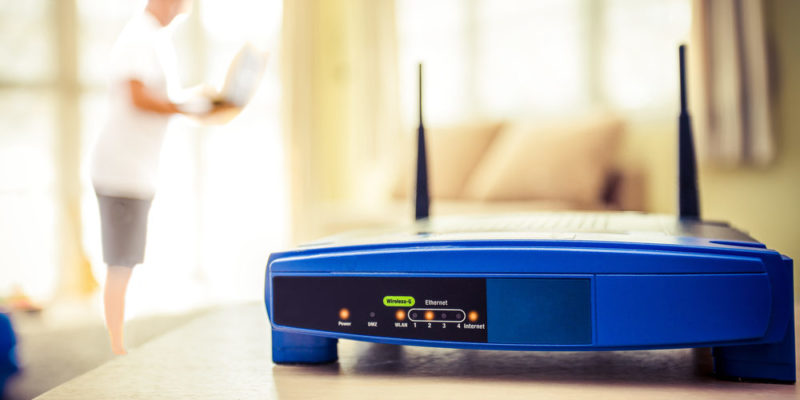We explain what computer networks are and how they are classified. In addition, what are their characteristics and the uses they present.
What are computer networks?
Computer networks, data communications networks or computer networks are understood to be a set of computer systems interconnected by various wired or wireless devices.
Through these systems they can share information in data packets , which are transmitted by electrical impulses, electromagnetic waves or any other physical medium.
Computer networks are not different, in their exchange logic, from other communication processes : they have a sender, a receiver and a message , a medium through which to transmit it and a series of codes to guarantee mutual understanding. The peculiarity is that in this case, the emitters and receivers are computers.
The invention of computer networks was a technological, social and economic revolution , allowing remote interaction for many operations, and is one of the great advances of the late twentieth century in computing .
Types of computer networks

- LAN. Local Area Network (" Local Area Network ") is called the networks of smaller size, like those of a booth or cyber cafe, or a house.
- MAN. Metropolitan Area Network (“ Metropolitan Area Network ”) designates medium-sized networks, such as those of university campuses or large libraries and companies .
- WAN. Wide Area Network (“Network of Wide Area”) is as it is called to the networks of greater size and reach, like the global network of Internet .
Networks can also be classified according to the technology that allows the connection, as follows:
- Guided media networks. They intertwine computers through some physical cable system: by braiding, coaxial cable or fiber optics.
- Unguided media networks. They connect their computers by means of dispersed and area-range means, such as radio waves, infrared or microwaves.
Elements of a computer network
Computer networks contain the following elements:
- Servers. Servers are computers that process the flow of network data, serving everyone else and centralizing control of the network. They operate as prosecutors, at the service of others (hence their name). They were previously called "teachers."
- Clients or workstations. The interconnected computers and not servers, which are part of the network and allow access to it. They were previously called "slaves".
- Transmission medium. The wiring or electromagnetic waves that the network uses to transmit information, depending on the type of network.
- Hardware . Electronic pieces that allow you to establish the network, such as the network cards of each computer, the modems and routers that support the transmission, or the repeater antennas that extend the wireless connection.
- Software . The programs required to manage and operate the hardware, including the Network Operating System (NOS) or communication protocols (such as TCP and IP).
Network topology

This is the name given to the interconnection model that has the relationships between clients and servers within a network. It can be of three types:
- Linear or by bus. A server is at the head of the network and clients spread out along a straight line from it. This line is the only communication channel, called the bus or backbone (“backbone”).
- In star . The server is in the hub and each client has a unique connection to it, so communication between servers must go through the hub first.
- Ring or circular . All computers are connected in a circle, in contact with those nearby and on equal terms.
What are computer networks for?
Who owns a computer network can manage an internal communication system , sharing files, Internet access points or even the control of peripherals such as printers, scanners, etc.
This means that computers can exchange information directly , overcoming physical distances and reducing the time required to do so.
Network protocols

Communication in computer networks is achieved thanks to a series of communication standards or "protocols", which translate the requests and responses of the equipment into the same code .
The most common of them is TCP / IP, but there are many that vary in their complexity and in the amount of information layers they handle at the same time, allowing a more secure, reliable and inaccessible communication by third parties.
Why are computer networks important?
In today's computerized world, computer networks are found in almost every area of life , especially those involving the bureaucracy or administration .
They also involve the Internet itself , which we access from computers, cell phones, and other devices.
The global economy , cultural exchange and even online socialization exist thanks to networks.
Internet

The Internet is the best current example of the reach and power of networks . It is a gigantic WAN that connects all the computers of all users in all countries of the world, allowing them to exchange information at many different levels.
Through it , online video games, exchange operations , sending millions of emails a day, video conferences, software updates, illegal downloads, electronic purchases and a practically unlimited etcetera are given.
Advantages of computer networks

Computer networks allow all kinds of operations to be carried out in real time and over huge distances, such as:
- Electronic purchases and capital movements.
- Social interactions, teleconferences, video calls.
- Data transmission, email and resource sharing.
- Transmission stream of audiovisual content.
- Satellite exploration and other surveillance technologies.
Disadvantages of computer networks
Computer networks have their weak sides. They can be the victim of cyber attacks , either by malicious software ( viruses , adware, etc.) or by cyber terrorists (hackers).
These attacks can cause data loss , privacy breaches, or damage to equipment and software.
History of computer networks

The first computer networks were heirs to the already widespread telegraphic and later telephone networks , since they applied the same principles.
The connection of the first computers, which were slow, expensive and took up an entire room. The first transmission between one and the other was in 1940 , when they sent a message from the University of Darmouth in New Hampshire to New York.
This is how the Internet emerged, exclusively for military use at first , but later as just another domestic service.
The creation in later years of minicomputers and personal computers revolutionized this field, allowing computers in the 1980s to use their modems to send and receive information over the telephone.
In the following decade, when the Internet was already a mass- demand service , telephone lines were the means of connecting these modems , called “dial up” or dial-up, since they occupied the line.
Later ADSL or "broad banking" was introduced , which allowed transmission through independent channels, and finally WiFi technology, which eliminated the wiring that traditionally went to the computer.
The above content published at Collaborative Research Group is for informational and educational purposes only and has been developed by referring reliable sources and recommendations from experts. We do not have any contact with official entities nor do we intend to replace the information that they emit.
Luke is passionate about fostering student involvement and connection. He studied psychology for his major and likes learning about the past. Luke aims to specialize in artificial intelligence and cybersecurity. .
Leave a reply
Your email address will not be published. Required fields are marked *Recent post

Sport: What Is It, Types, Risks, Features, Characteristics and Examples

Dogs: Emergence, Features, Characteristics, Feeding and Breeds

Story: Definition, Elements, Structure, Features and Characteristics

